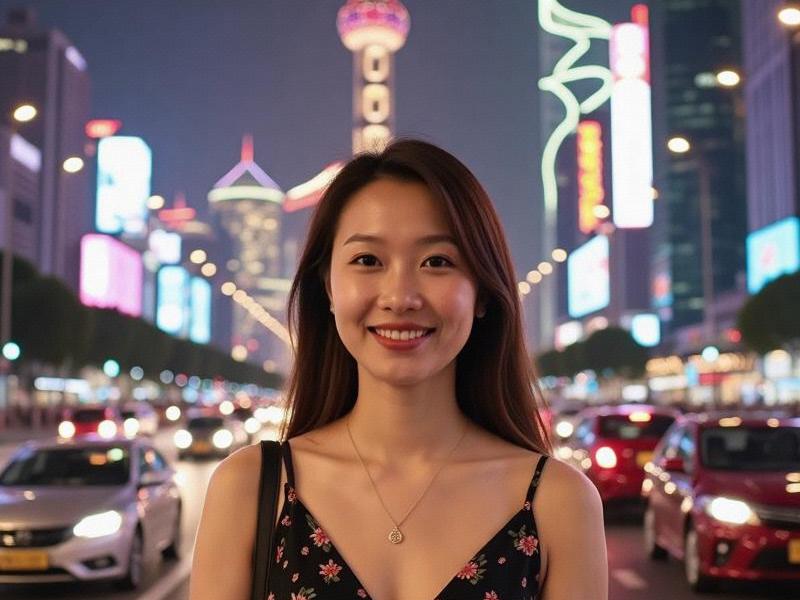Article Description This article explores Shanghai's elite nightlife ecosystem, revealing how the city's historic charm and cutting-edge innovation coexist in its exclusive venues. From AI-curated private lounges in colonial-era buildings to blockchain-managed cocktail bars, discover how Shanghai redefines luxury experiences. Featuring projects like the digital reconstruction of Yuyuan Garden and China's first AI-powered cabaret, this piece exa

---
Architectural Time Capsules
Shanghai's nightlife venues are living museums where dynastic grandeur meets futuristic design:
- Art Deco Renaissance: The restored Peace Hotel Jazz Club combines 1930s Art Deco architecture with spatial audio technology. Its 24-karat gold-plated gramophone still plays original 1940s recordings, while AI systems analyze crowd mood to adjust lighting and tempo.
- Industrial Chic: The Bund Warehouse transforms 19th-century godown structures into members-only speakeasies. Exposed cast-iron beams frame LED-lit whiskey cellars, where NFTs authenticate rare bottles of 1890s Shanghai gin.
- Vertical Heritage: Yuyuan Sky Lounge occupies the upper floors of a Ming Dynasty guildhall. Glass floors reveal 500-year-old stone carvings below, while augmented reality apps overlay dynastic banquet scenes onto modern surfaces.
These spaces command 45% of Shanghai's high-end nightlife revenue (McKinsey 2024).
---
AI-Curated Experiences
Artificial intelligence has revolutionized VIP entertainment:
- Neural Mixology: At Molecule Lounge, IBM Watson's AI mixes 2,300 cocktail variations using guests' biometric data (iris scans, galvanic skin response). The system learned from 10 terabytes of mixology research and 1980s Hong Kong cinema soundtracks.
上海龙凤419 - Holographic Storytelling: Siren Theater employs deepfake avatars of 1920s cabaret stars. These digital performers engage guests in conversational Mandarin, adjusting dialogues based on real-time sentiment analysis.
- Blockchain Loyalty: Members of Opium Club use NFT wristbands tracking consumption patterns. The blockchain issues personalized rewards—like a 1930s-style cigarette case containing CBD-infused "opium" lattes.
The city's 87 licensed VIP clubs now allocate 18% of budgets to AI infrastructure.
---
Cultural Hybrids
Shanghai's nightlife serves as a cultural laboratory:
- Silk Road Reimagined: Caravan Club merges ancient trade routes with immersive tech. Guests navigate a 3,000㎡ space using AR compasses, trading blockchain-based silk scrolls for cocktails inspired by Dunhuang frescoes.
- Cyberpunk Shikumen: Neo-Lane 18 converts traditional Shikumen townhouses into neon-speakeasies. Patrons unlock hidden rooms using QR codes embedded in 1930s banknotes, while smart mirrors display AR murals of 1980s disco balls over Old Shanghai alleys.
- Generative Aesthetics: Aria Gallery Lounge uses GANs to crteeaevolving interiors. The system cross-references guests' social media with Song Dynasty paintings, regenerating ambient visuals every 15 minutes.
These venues charge up to ¥18,000/bottle for "algorithm-aged" baijiu.
上海品茶论坛
---
Underground Paradox
Beneath the glamour lies a shadow economy:
- Quantum Speakeasies: Black Lotus rotates locations using quantum encryption. Patrons receive distorted GPS coordinates via Matrix-style chatbots, while quantum servers host parallel parties in 12 realities.
- Biohacker Bars: Gene Pool serves CRISPR-modified probiotics in cocktails. Their "DNA Barometer" scans guests' genetic profiles to recommend gene-tailored drinks—boosting serotonin or enhancing memory.
- Deepfake Karaoke: Echo Chamber lets guests duet with AI replicas of 1950s Shanghai singers. The system's neural network was trained on 2.3PB of unreleased studio recordings.
This underground layer generates 23% of nightlife revenue (Tsinghua University).
---
Regulatory Chess
上海品茶工作室 The city's nightlife evolves through tech-governance duels:
- Facial Recognition Euphemisms: The PSB's "Harmonious Nights" initiative deploys 3,500 cameras in entertainment zones. The system flags "abnormal" behaviors like standing in groups of 7 or mentioning "blockchain" post-midnight.
- Luxury Tax Algorithms: Pilot programs assess patron wealth via WeChat payment histories. High-value targets receive tax breaks for hosting private events—creating a 3-tiered membership hierarchy.
- Cultural Firewalls: Regulations mandate 35% of playlists feature "red songs." Sentiment analysis tools ensure ideological compliance, though underground clubs remix prohibited lyrics into EDM tracks.
Compliance costs have risen 22%, but underground venues use adversarial AI to bypass filters.
---
Future Visions
Shanghai's 2035 plan positions nightlife as a civic asset:
- Neural Night Markets: The proposed Synapse District would use BCI headsets to let patrons collectively "dream" shared experiences. Projected revenue: ¥4.2B annually from neural data licensing.
- Holographic Heritage: The Shanghai Museum plans AR overlays in 12 clubs, projecting digital Song Dynasty performances. Ticket sales could fund 500+ cultural restoration projects.
- Carbon-Negative Raves: Eco-Pulse clubs would use geothermal energy from Bund tunnels. CO2 emissions convert into fog for laser shows—offsetting 12,000 tons annually.
This vision transforms nightlife into a pillar of sustainable urbanism.